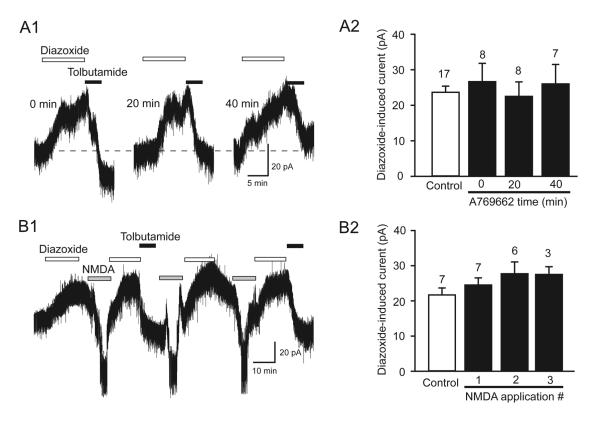Fig. 8.
AMPK activator A769662 does not potentiate currents evoked by diazoxide. (A1) Current traces show that currents evoked by bath applications of diazoxide (200 μM) do not increase over time when recorded with pipettes that contained A769662 (5 μM). This figure also shows that diazoxide currents are completely blocked by tolbutamide (100 μM). (A2) Summary histogram showing that A769662 does not change the amplitude of diazoxide current. Diazoxide currents were evoked every 20 min after beginning whole-cell recordings. The bar labeled “control” represents diazoxide currents recorded without A769662 in pipettes. (B1) Current traces showing that repeated applications of NMDA (10 μM) do not alter diazoxide-induced currents when recorded with pipettes that contained A769662. (B2) Summary histogram showing lack of effect of repeated NMDA applications on diazoxide currents. NMDA and diazoxide were applied to the bath every 30-35 min. The bar labeled “control” represents currents evoked before NMDA application using pipettes with A769662. Numbers above columns indicate number of cells.

